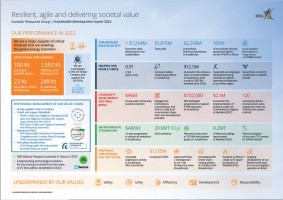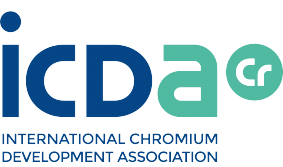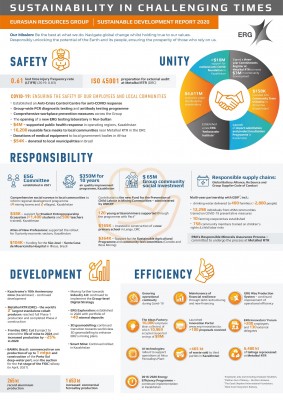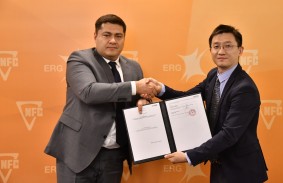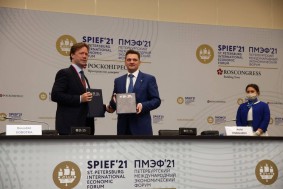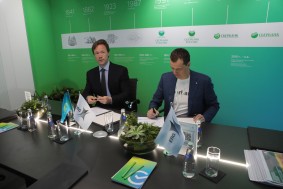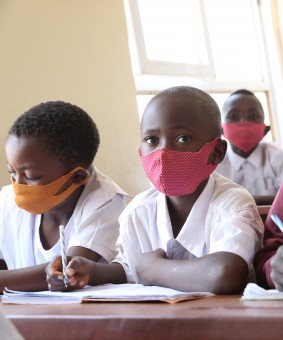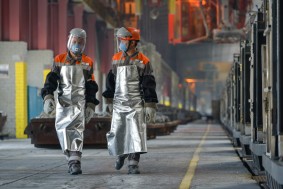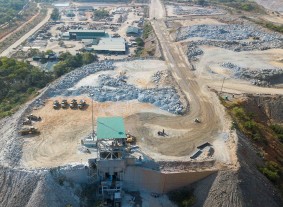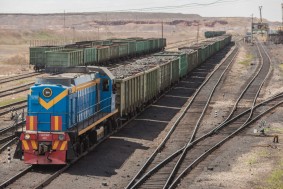Eurasian Resources Group: Outlook for cobalt and copper markets for 2017 and beyond
Benedikt Sobotka, CEO of Eurasian Resources Group (ERG), one of the world’s leading diversified natural resources groups, makes a mid-year review of the cobalt and copper markets and outlines what the future holds for the two metals.
Cobalt: ERG’s RTR project will help ease deficit, but market will remain supply constrained
- We estimate that cobalt demand will almost double to 191,000 tonnes by 2025
- Policy environment favors electric vehicle growth; UK and France to ban petrol and diesel car sales by 2040
- By-product cobalt supply insufficient in the long-term; beyond current pipeline of advanced projects, the world has to find another 53,000 tonnes of cobalt per annum by 2025
Cobalt has had a phenomenal year. By the end of June, the price was up 93% YTD and this upward trajectory has continued in July and into August (Metal Bulletin). The demand story remains strong. Tesla made electric cars desirable and is now entering the mass production segment with the long-awaited Model 3. Most traditional car manufacturers have caught on, and those that have not will soon realise that the future lies in hybrid and plug-in battery electric vehicles.
The pressure to act quickly is mounting as an increasing number of cities worldwide are cracking down on vehicle emissions and noise pollution. Both France and the United Kingdom have proposed bans on the sale of petrol and diesel cars by 2040.
Global cobalt demand is set to expand by a compound annual growth rate (CAGR) of 8% to 2025, with the rechargeable battery sector accounting for the majority of this growth, with a CAGR of 11%. The battery sector, in turn, will be led by demand from the battery electric vehicle (BEV) market, which is forecast to see a CAGR of 26%. Mined cobalt demand is forecast to increase from 99,600 tonnes in 2016 to 191,000 tonnes in 2025 (ERG Market Intelligence).
Improved battery technology and lower cobalt utilisation is a threat, but it is far outweighed by the sheer number of electric vehicles (EVs) being produced. Last year saw global sales of 2.9m EV units. By 2026, sales are estimated to reach nearly 30m units (LMC Automotive / Note: Includes hybrid vehicles). Sales of more cobalt intensive full battery electric vehicles will rise from around 450,000 units in 2016 to 6.5m units in 2026 (LMC Automotive).
ERG Market Intelligence estimates a cobalt market deficit of almost 7,000 tonnes in 2017, which has helped drive the price increases over the past 6-9 months. The launch of ERG’s Project Roan Tailings Reclamation (RTR) will help ease this deficit, but the cobalt market will remain supply constrained over the next decade. We estimate that even with the current pipeline of advanced projects, the world has to find another 53,000 tonnes of cobalt per annum by 2025 to fill the gap.
With increasing pressure to eliminate unethical cobalt from the value chain, it is paramount that new ethical supply comes on line. As cobalt producers thought to sponsor child labour directly or indirectly are put under increasing scrutiny, this material will become unmarketable, creating an even greater market deficit. ERG’s Metalkol Project RTR will operate under strict controls to produce ethical cobalt, and we intend to manage the flow of our material throughout the value chain to ensure that it is not mixed at any stage with unethical cobalt. Meanwhile, ERG helps develop the local communities surrounding our operations in the Democratic Republic of the Congo by sponsoring housing, education and local businesses.
Copper: China defies the sceptics, while fundamentals paint a very positive picture longer term
- Chinese refined copper demand is set to grow by 4.5% this year on the weaker than expected impact of deleveraging measures and robust performance in the construction and appliances sectors
- Meanwhile, 2017 mine output is set to fall by 3.4%, the first contraction in 15 years, due to mining disruptions and limited new supply
- Longer term, EV demand, the Belt and Road Initiative, China’s drive towards renewable energy and infrastructure investment in the US will support a global refined copper demand CAGR of 1.9% in 2017-21
- As the pipeline of mine projects thins, the market will move into a period of supply-driven market deficits, which will see a cumulative shortfall in refined copper supply of almost 0.9Mt in 2019-21
Copper prices were resilient in H1 2017, dispelling concerns that the red metal became overpriced in late-2016 on what some considered as ill-founded optimism. Even as key mine disruptions ended and China rolled out new capital control measures, prices remained within the new trading range of approximately USD 5,400-6,200/t that was established between December and February.
H2 2017 started with a bang as consensus-beating macroeconomic data emerged for China, catching the sceptics off guard yet again and propelling copper prices to a 2-year high. Overall, we expect China’s refined copper consumption to grow at a healthy pace of 4.5% this year (ERG Market Intelligence), supported by better than expected performance in the construction and appliances sectors. We will undoubtedly see consensus forecasts upgraded in the coming weeks.
In the longer term, the Belt and Road Initiative, China’s investment into copper-hungry renewable energy, and the potential for infrastructure investment in the US could all outperform analysts’ expectations. One area that we are monitoring particularly closely is how the EV revolution will affect demand. EVs use 2-3 times more copper than conventional internal combustion engine vehicles and a recent study commissioned by the ICA suggested that the sector’s copper consumption may increase from 185kt this year to 1.7Mt in 10 years’ time (International Copper Association/IDTechEx), or close to 10% of total demand.
On the supply side, we estimate that copper mine output will fall by 3.4% this year (ERG Market Intelligence), the first contraction in 15 years, culminating in a moderate refined market deficit of around 150kt (ERG Market Intelligence). There are no major projects due on stream this year and the threat of further mine disruptions looms, with more than 1.5Mt of mine capacity under threat of strikes before the year-end (CRU Group).
Longer term, we maintain our long-held view that the copper market is moving into a period of structural supply-driven market deficits from 2019. Following years of underinvestment, the pipeline of advanced mine projects is nearing exhaustion and will be unable to counteract declining output from existing capacity for long. Overall, we expect total refined copper supply to increase at a CAGR of just 1.3% in the next five years (ERG Market Intelligence), well below the 1.9% CAGR we foresee in consumption (ERG Market Intelligence). We estimate that this will result in a cumulative shortfall of almost 0.9Mt of refined metal during 2019-2112.
For these reasons, we reaffirm our positive outlook for copper in the coming months and years.
























